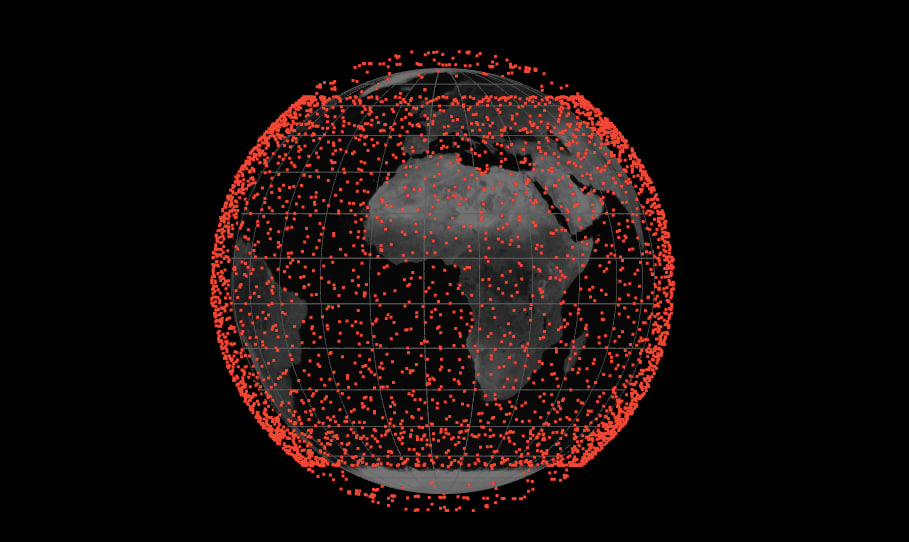In a remarkable convergence of biology and space technology, the next generation of Mars rovers might navigate the Red Planet using software inspired by insects. London-based Opteran has announced a groundbreaking partnership with Airbus Defence and Space, backed by both the European Space Agency (ESA) and the UK Space Agency, to test their nature-inspired autonomous navigation system in space rovers.
From Earth's Smallest Creatures to Mars's Greatest Challenges
The journey to Mars has always been fraught with challenges, but one of the most persistent has been the issue of autonomous navigation. Current rovers face a significant handicap: they must pause frequently to process their surroundings, taking precious minutes to compute depth maps before making even the smallest movements. This start-stop approach has literally kept Mars exploration at a crawl.
"Mars is possibly one of the hardest places to do autonomy," explains David Rajan, co-founder and CEO of Opteran. "People don't realize quite how far away Mars is in comparison to the moon. When you're trying to operate a rover on Mars, it takes about 30 minutes just to get a message there."
Nature's Elegant Solution to a Complex Problem
What sets Opteran's approach apart is its foundation in biological research. After more than a decade of studying animal and insect vision, navigation, and decision-making, the company has reverse-engineered natural brain algorithms into software that could revolutionize how rovers perceive and navigate their environment.
The result? A system that can process visual information and create depth maps in milliseconds rather than minutes, all while consuming minimal power—a crucial consideration for space operations where every watt of energy counts.
"If you're going to shoot it on a rocket, then the weight of the machine really matters," Rajan notes. "And if it's going to be running remotely off of batteries, probably solar charging, then power consumption really, really matters."
Breaking Free from the Stop-and-Go Paradigm
The current limitations of Mars rovers are stark: they must stop every few feet to process their surroundings, making exploration a painfully slow process. Opteran's technology promises to transform this paradigm entirely. Their system can process and build depth maps at 90 frames per second, effectively reducing processing time from minutes to near-instantaneous.
"That completely transforms the pace and what you can do," says Rajan. "Essentially, we take minutes of processing to nothing."
Looking Toward a More Ambitious Future
While the immediate focus of the project centers on depth estimation for obstacle detection, Opteran's vision extends much further. The company sees potential for their technology to enable infrastructure-free visual navigation, allowing rovers to build maps and navigate independently across the Martian surface.
Perhaps most intriguingly, Opteran is exploring the possibility of deploying fleets of smaller, lighter, and more affordable rovers. This could revolutionize Mars exploration by allowing multiple robots to simultaneously map difficult terrains, spreading risk and multiplying data collection capabilities.
The Path to Implementation
The journey from Earth-based testing to actual Mars deployment is rigorous and methodical. Testing is currently underway at Airbus's Mars Yard, where the technology faces conditions designed to simulate the challenging Martian environment. Once initial testing results are presented to the ESA, the project could move to its next phase, focusing on deployment and commercialization.
"It's a team effort, and every tiny aspect has to be considered, and it has to be the best it can be," Rajan emphasizes. "It has to be optimized to oblivion, because it's going to face some of the harshest conditions, not just on the planet but also in the solar system."
A New Chapter in Space Exploration
This project, funded through ESA's General Support Technology Programme (GSTP) via the UK Space Agency, represents more than just a technological advancement. It symbolizes a shift in how we approach space exploration, looking to nature's time-tested solutions to solve the challenges of tomorrow.
The success of this venture could mark a turning point in our ability to explore Mars and other distant worlds. By enabling rovers to move more quickly and confidently across alien terrains, we may soon be able to uncover more of Mars's secrets than ever before—all thanks to the humble insights provided by Earth's smallest creatures.
As we stand on the brink of this new era in space exploration, it's perhaps fitting that the key to unlocking the mysteries of Mars might lie in the elegant solutions evolved by insects here on Earth. Sometimes, it seems, the biggest breakthroughs come from the smallest sources.


















